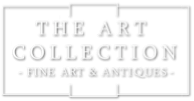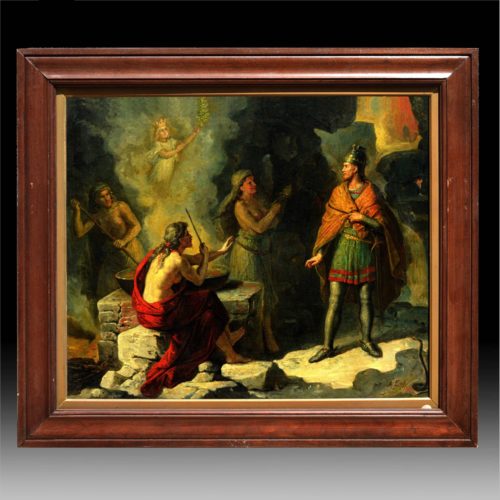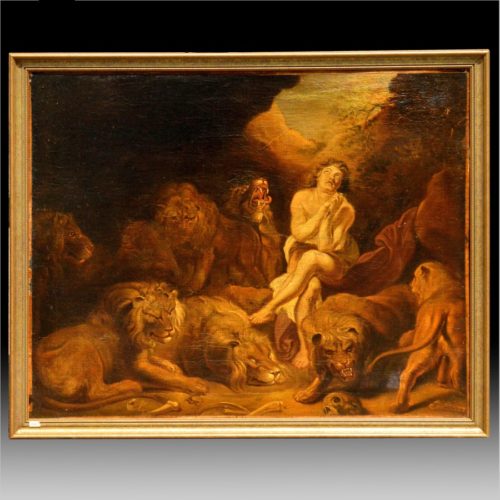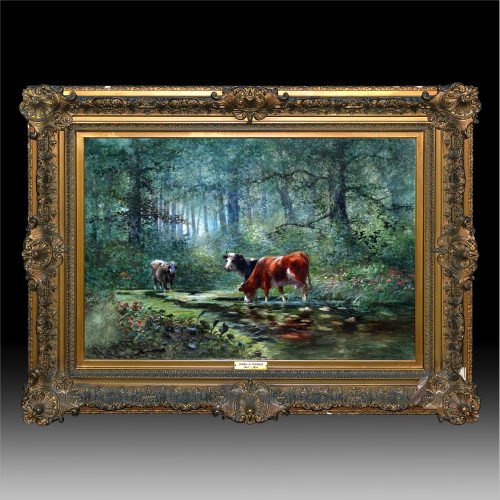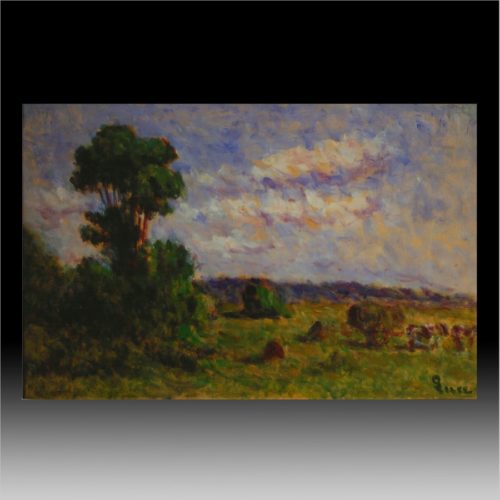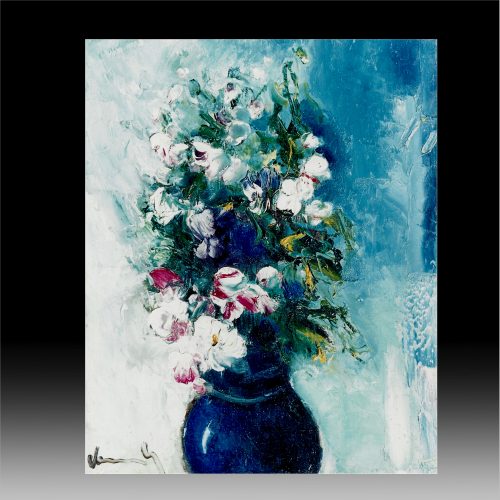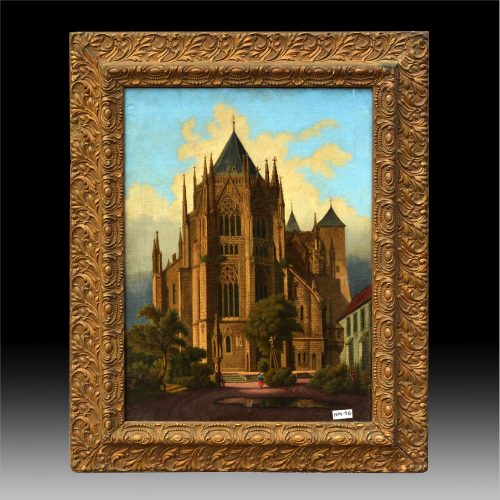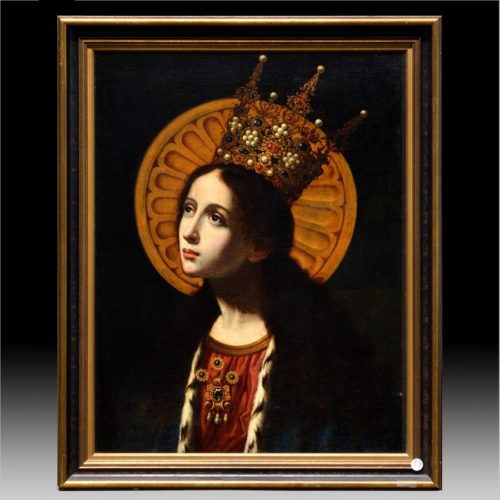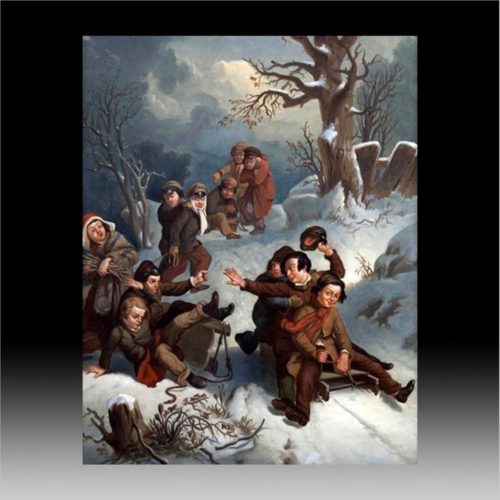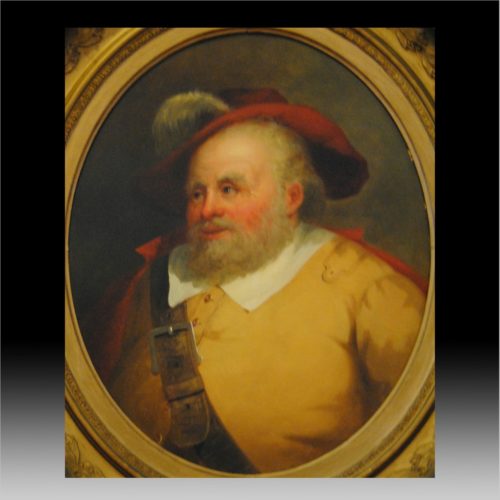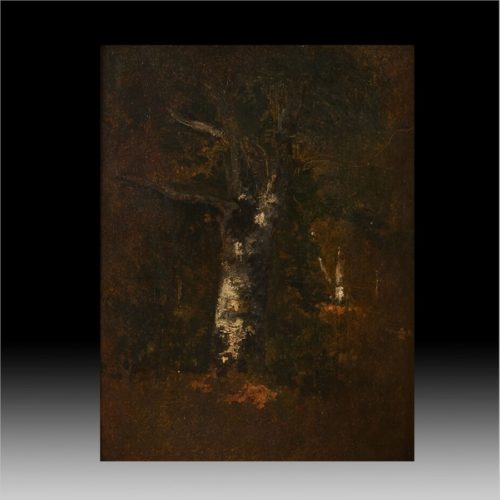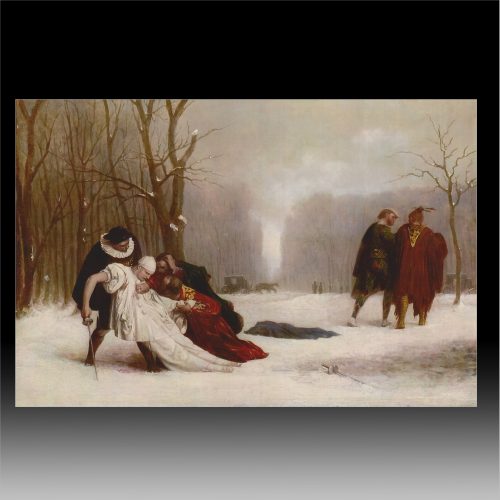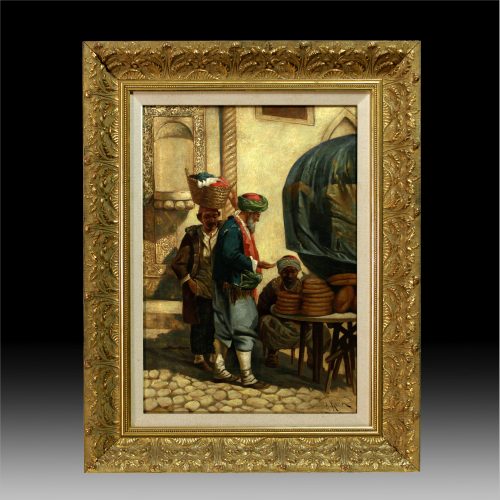-
War Scene Oil on canvas 22 ½” x 27” Year of work: 1880
-
Sir Peter Paul Rubens ‘Daniel in the Lion’s Den’ oil on canvas, unframed 30 ¼ x 37 in. (76.8 x 94 cm) CL102794-119 328901-2 @Albertson
-
Hugh A. Fisher 1867-1916 Cows Grazing Watercolor 34” x 25” @AC-NB
-
Maximilien Luce (French, 1858–1941) “La fenaison a I’lli de France” Oil on paper laid down on canvas 11 ¼”x 17 ½” Stamped lower right COA by J. Bouin-Luce Maximilien Luce (13 March 1858 – 6 February 1941) was a prolific French Neo-impressionist artist, known for his paintings, illustrations, engravings, and graphic art, and also for his anarchist activism. Starting as an engraver, he then concentrated on painting, first as an Impressionist, then as a Pointillist, and finally returning to Impressionism. Born on 13 March 1858 in Paris. His parents, of modest means, were Charles-Désiré Luce (1823–1888), a railway clerk, and Louise-Joséphine Dunas (1822–1878). The family lived in the Montparnasse, a working-class district of Paris. Luce attended school at l'Ecole communale, beginning in 1864. In 1872, the fourteen-year-old Luce became an apprentice with wood-engraver Henri-Théophile Hildebrand (1824–1897). During his three-year xylography apprenticeship, he also took night classes in drawing from instructors Truffet and Jules-Ernest Paris (1827–1895). During this period, Luce started painting in oils. He moved with his family to the southern Paris suburb of Montrouge. His art education continued as he attended drawing classes taught by Diogène Maillard (1840–1926) at the Gobelins tapestry factory. Luce began working in the studio of Eugène Froment (1844–1900) in 1876, producing woodcut prints for various publications, including L'Illustration and London's The Graphic. He took additional art courses, at l'Académie Suisse, and also in the studio of portrait painter Carolus-Duran (1837–1917). Through Froment's studio, Luce became friends with Léo Gausson and Émile-Gustave Cavallo-Péduzzi. These three artists spent time around Lagny-sur-Marne creating Impressionist landscapes.
-
Maurice de Vlaminck (French, 1876-1958) “Fleurs dans un vase bleu” Oil on canvas 18”x 14” Signed lower left COA by Wildenstein Institute
-
Chrisitian Schussele (American/French (1824-1879) “Clear the Track” Oil on canvas 23 x 18 inches Provenance: David, David Inc., Philadelphia
-
George Henry Durrie American, 1820-1863 “John Henry Hackett as Falstaff” Oil on Board PROVENANCE: By descent through the artist’s family Hally L. Durrie, Santa Barbara, the artist’s great grandson Terry DeLapp, Los Angeles Mrs. George Arden, New York LITERATURE M.Y. Hutson, Geroge Henry Durrie, 1820-1863, American Wiinter Landscapist: Renouwned throughCurrier & Ives, Santa Babra, p.55, no. 51, illus. Records and personal diaries indicate that Durrie read Shakespeare and was inspired to paint Falstaff. According to Martha Hudson, “Two portraits of Falstaff are known, both listed in the record book. The 1852 painting (this portrait) is thought to be a portrait of the actor James Hackett portraying Falstaff, a role he made famous in America. Since Hackett performed in New York City as well as on tour, Durrie could easily have seen a performance. Obviously the characterization was effective because the portrait is jovial and abundant in appearance as one could hope for a Falstaff.” 17” x 13 ½” (43 x 34.3 cm)
-
Narcisse Virgilio Díaz de la Peña (French, 1807-1876) “La foret” oil on canvas 18’’x 12’’
-
After Jean Leon Gerome (French, 1824-1904) Sortie du Bal Masque Oil on panel. 9 x 13 ¼ in. (23 x 32.5 cm)
-
Aleksei Mikhailovich Korin (Russian, 1865-1923 The bread seller oil on canvas
